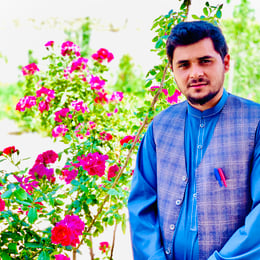The most authoritative answer in 2024
-
As an expert in cultural studies, I have a deep understanding of various festivals celebrated around the world. One such vibrant and colorful festival is Holi, which is widely recognized for its joyous celebrations and symbolic significance. Let's delve into how Holi is celebrated, keeping in mind the rich traditions and customs associated with it.
Holi is not just a single day of celebration but a multi-day event that marks the arrival of spring, the end of winter, and for some, it also signifies a religious victory of good over evil. The festival has its roots in Indian culture, but it has been embraced by people from various backgrounds across the globe.
### Eve of Holi - Holika Dahan
The festivities commence with Holika Dahan, which takes place on the eve of Holi, typically at or after sunset. This ritual involves lighting a pyre, which is a significant symbol representing the triumph of good over evil. The story behind this tradition is rooted in Hindu mythology, where a demon named Holika, who was immune to fire due to a boon, was tricked by a young prince named Prahlad into sitting in a pyre. Despite her immunity, Holika was consumed by the flames, while the devout Prahlad survived, symbolizing the victory of virtue.
During Holika Dahan, people gather around the bonfire to sing and dance, celebrating the victory of good and the destruction of evil. This event sets the stage for the main Holi celebrations that follow the next day.
### Playing with Colors - Dhulandi
The main event of Holi is known as Dhulandi, which is celebrated the morning after the Holika bonfire. This is the day when the streets come alive with people of all ages playing with vibrant colors. The colors used in Holi have a symbolic meaning, representing joy, love, and the vibrancy of life. Participants throw colored powders (gulal) and water at each other, often leading to a playful and messy affair. The act of playing with colors is not just a form of entertainment but also a way to foster social harmony and break down social barriers.
### Social Gatherings and Music
Holi is a time for social gatherings, where friends and family come together to celebrate. Traditional music and dance are an integral part of the celebrations. People often play instruments like the dhol, a type of drum, and sing folk songs that are specific to the Holi festival. The music and dance add to the festive atmosphere and encourage people to let go of their inhibitions and enjoy the moment.
### Traditional Foods
The festival is also marked by the preparation and sharing of traditional foods. Sweets and snacks made from gram flour, such as gujiya and besan ke laddoo, are popular during Holi. These delicacies are often homemade and shared among neighbors and friends as a gesture of goodwill and togetherness.
### Safety and Respect
While the festival is a time of great joy and revelry, it is important to maintain a sense of respect and safety. Participants should be mindful of the colors they use, ensuring they are non-toxic and safe for the environment and people's skin. Additionally, it is crucial to respect personal boundaries and consent, ensuring that the playful spirit of Holi does not cross into harassment or discomfort.
### Conclusion
Holi is a festival that transcends cultural and religious boundaries, offering a unique blend of celebration, symbolism, and togetherness. It is a time to let go of past grievances, to come together in the spirit of love and unity, and to welcome the rejuvenating season of spring with open arms.
read more >> -

-
Alexander Adams——Works at Apple, Lives in Cupertino. Graduated from University of California, Berkeley with a degree in Electrical Engineering.
On the eve of Holi, typically at or after sunset, the pyre is lit, signifying Holika Dahan. The ritual symbolises the victory of good over evil. People gather around the fire to sing and dance. Holi frolic and celebrations begin the morning after the Holika bonfire.read more >>
about “象征、篝火、火柴”,people ask:
- 81回复How many days Pongal is celebrated??
- 30回复Why Lord Krishna is blue in color??
- 34回复Why do we celebrate Sankranti festival??
- 88回复Why do we burn Holika??
- 90回复Why is it important for Hindus to celebrate Diwali??
- 28回复What do Hindus do to celebrate Diwali??
- 73回复Why are there nine candles on a menorah??
- 83回复Why is Holi celebrated in short??
- 12回复Where we celebrate Pongal??
- 50回复What are you supposed to do on Hanukkah??
- 28回复How is the festival of Holi celebrated??
- 22回复What is the meaning of star birthday??
- 24回复What kind of food is eaten at Diwali??
- 78回复What is Krishna God??
- 14回复Who killed holika??
READ MORE:
- +1258What is the story of Holi festival?
- +1695Why do we celebrate Sankranti festival?
- +1744What do Hindus do to celebrate Diwali?
- +1808Why is it important for Hindus to celebrate Diwali?
- +1189Is it better to live in the US or Canada?
- +1845How a senator is elected?
- +1633Is a congressman higher than a senator?
- +1713Which is the smallest democratic country in the world?
- +1675What was the first country in the world to have a democracy?
- +1772What does democracy mean to you?
- +1989When did democracy begin?
- +1148How is Canada and the US government the same?
- +1156Why are there two senators from each state?
- +1865What is the difference between a congressman and a senator?
- +1590Is democracy in Pakistan?
QuesHub is a place where questions meet answers, it is more authentic than Quora, but you still need to discern the answers provided by the respondents.







